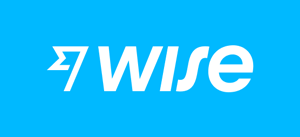The main areas for comparison between international money transfer companies are:
Exchange rate
One of the ways banks and transfer companies can make their money is by charging a markup on the exchange rate offered. When comparing your options, it’s important to have an idea of what is known as the mid-market exchange rate. This is the best rate you can hope to get when transferring between two currencies, so the closer to the mid-market rate you get, the more rupiah you’ll be able to buy.
Banks tend to have the highest fees and lowest exchange rates, which is why they’re generally far more expensive than international money transfer companies. Some transfer companies will charge a small transfer fee and a slight, or no, markup on the exchange rate. Others charge no fees at all but their markup is slightly higher. For this reason, it’s important to compare the exchange rates offered by different providers and their fees as a package, as one will affect the other.
Fees charged for the transfer
Some companies have a set fee (up to $15) on their transfers, while others base their charge on a percentage of the transfer amount, typically ranging from 0.4% up to 0.65%. As mentioned, other companies don’t charge a fee at all. It’s important to consider which fee structure is most suitable for the type of transfer you’re looking to make.
In general terms, a percentage fee will be the cheapest option to transfer smaller amounts. For example, a provider charging a fee of 0.5% of your transfer amount would only cost you $2.50 if you were transferring $500, but $25 if you were transferring $5,000. A set fee will often prove to be the most economical option for larger transfers.
Transfer limits
Check whether there are any minimum or maximum transfer limits which individual transfer providers may apply. Minimum transfers range from $1 right up to $200 to $250 for more business-oriented services such as OFX. Some transfer companies have daily maximums (such as $5,000), although other companies set their limits far higher at up to $500,000 or more.
Country and currency availability
Make sure the company you choose does deal in Indonesian rupiah and can deliver to the region you require. Also, check that they can deliver your transfer in the required way, whether that be into an Indonesian bank account, to a mobile app or in cash.
Payment method
The method you use to pay for your transfer in Australia can also vary between providers – choose between direct debits, bank transfers using BPAY or OSKO, card payments or cash. If you are tempted to use a card linked to your Apple Pay wallet, make sure you don’t use a credit card that charges a high transfer fee.
Customer support
It’s worth determining if your provider offers 24/7 support in your preferred language if you want the security of their assistance if you have any questions. Additionally, if you’re planning to make a large business transfer to Indonesia, it may be worthwhile speaking to a business manager at your preferred transfer company, as you may qualify for reduced fees or a more preferential exchange rate. This will also apply if you are going to make regular transfers to Indonesia. Many companies use business-oriented providers in such circumstances as they offer extensive customer support to business clients.
















